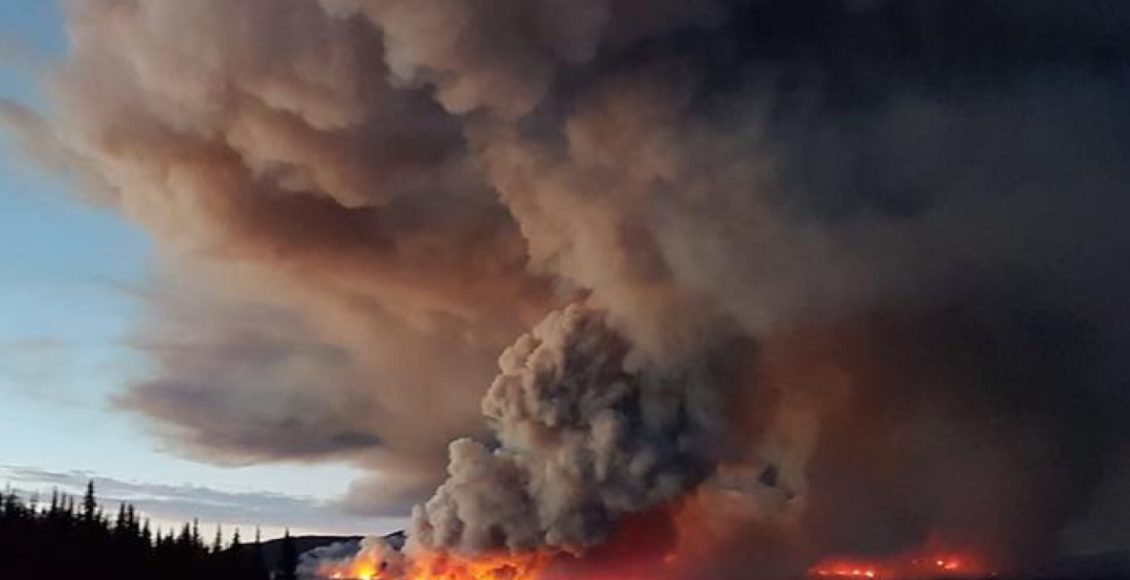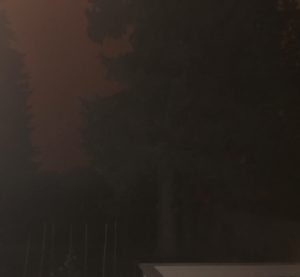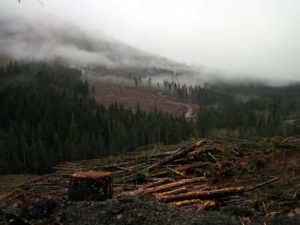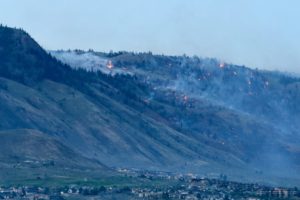Playing with Fire – The Forces that Ignited British Columbia’s 2018 Wildfire Season

This summer, British Columbia’a wildfire season surpassed 2017 as the worst on record, bringing fires to the forefront of the province’s conscience once again. Over 1.3 million hectares, covering 1.3% of the province and 2.1% of forests, were burned. A province-wide state of emergency lasted 23 days- as almost 5000 people were forced from their homes and firefighters from New Zealand, Mexico, Australia, and the rest of Canada were called in to help. From northern towns in the Peace region to the western coast of Vancouver Island, smoky skies blocked out the sun and brought a whiff of ash. Over 2000 fires started; many were scattered across remote corners of the province, stretching resources thin and accruing a cost of $350 million in resources and damages. Accompanying the haze was record heat as a ridge of warm air settled over most of the province, the latest in a pattern of extremes experts are suggesting may be the new normal. Following this (in addition to 2017, which burned an area nearly a 10-fold increase from the average), it is past time reconsider the place of wildfire.

Grown from Ashes
For most of history Canada’s Boreal Forest has relied on a cycle of fire succession: intense heat is one of the few stresses that will open cones of spruce and fir. Following a wildfire -caused by lightning-, nutrient-rich ash hastens the growth of shrubs and wildflowers, creating spots of biodiversity in the forest. Deciduous trees emerge, and eventually conifers take over, returning the forest to its mature state after about 100 years. Although it can be distressing to see an idyllic forest go up in flames, the rejuvenated ecosystem is healthier and more resilient as a result.
Human activity has thrown a wrench in this balance. While the causes and process of fire are still largely natural, the scale and intensity of the last wildfire seasons can be partially attributed to human actions, some set-in motion decades ago.
Management Backfire
British Columbia has a long history of trying to fit a lumber-dependent society into a combustible landscape. The economic push for timber in the early 20th century created fuel for blazes and suffered heavy losses when the landscape went up. As a result, Canada and BC created strong policies to prevent fires from starting and to put them out as soon as possible if they broke out.

By 1939, more than half of the province was patrolled with the intention of preventing and controlling fires, and the value of timber heavily influenced the location and intensity of effort. In 1944, around the time that Smokey the Bear was introduced to help fight a similar fire-prevention struggle in the US, the Chief Justice of BC recommended that the new Forest Service increase funding to protect what was and still is considered BC’s greatest asset. Fire reduction rose considerably over the next decade and until the 1960s, anti-fire policies were implemented, particularly in National Parks where total suppression was observed.
Today, the benefits of fire are recognized by management policies and non-threatening fires are left to burn. But what are the costs from years of fire suppression? Thanks to the success of misguided efforts, dry loads of dead wood haven’t burned and stalled forests have grown dense, overloading fuel for the inevitable spark. These tinder-piles easily alight, becoming uncontrollable fires that can cross breaks and cover acres of land. Even with the cutting edge fire management strategies that the BC WildFire Service employs today, large areas of dead and dying trees are left untreated.
“the more successfully we remove fire from the landscape, the more costly and damaging fires become…”
– Forest Practices Board Report – SIR34 – Feb 2012 – Fire Management Planning
The escalating struggle with fire in British Columbia has belonged to the last century alone. Before wooden settlements and industry logging dictated fire policy, wildfires were widely used as a preventative measure by indigenous people across fire-prone regions. Traditional wisdom understood that burning dry stands early in the season created firebreaks and allowed the forest to diversify. Indigenous nations from the Okanogan region, which suffered over 70 fires in 2018, to as far as Australia set controlled fires to encourage biodiversity in their landscape, a long-demonized practice that is gaining recognition in management strategies.
A Province of Trees
Much of fire policy has been influenced by BC’s forestry sector, which contributed $12.9 Billion to GDP in 2016. Forestry in British Columbia has some of the highest conservation standards in the world, harvesting less than 1% of provincial timber each year and rigorously replanting logged areas. However, despite strict cleanup strategies, wood waste and spent cut-blocks have provided catalysts for fires ever since the first prospectors began cutting lumber.
Furthermore, in attempts to shorten harvesting intervals, many major companies take steps that do nothing to ease fire risk. After an area is clear-cut, it is quickly re-planted with native trees intended as future harvest. To reduce competition, companies such as Canfor spray herbicides to destroy shrubs and deciduous trees, effectively creating a plantation. While this does allow conifers to grow quicker (and closer together), it removes deciduous trees from the ecosystem, increasing the fire-sensitivity of the forest. Deciduous trees such as Alder burn slowly and do not contain the resin that causes wildfires to burn so hot; they act as a constraint to the severity and speed of a wildfire. By framing forests purely as revenue, industry efforts to increase profits may result in losing them altogether.

Living in the Danger Zone
Revenue-driven companies are unable to see the forest for the trees. But they are not the only ones who forget that the form and function of the Boreal Forest go beyond society’s values. The natural beauty of British Columbia is a draw for local urbanites and people around the world, creating pressure to keep the forest in its peak state. Tourism revenues continue to grow and ever more luxury homes and cottages are being built in the forested backcountry. The influx of people has two direct effects: a greater frequency of accidental human-started fires, and a greater area necessitated by the Wildfire Service to remain fire-free. In 2017, when a large proportion of fires were near rural centers, over $127 million in property damage was claimed. If there’s a lesson to be learnt here, it’s we can’t expect to live and profit in an ecosystem without acknowledging the larger forces at work.
Fanning the Flames
It might be tempting to think of devastating wildfires as a problem for British Columbians (and Albertans, and Californians, and Australians, and Russians…) but bad fire seasons have causes and effects beyond their borders. Drought, hot temperatures, and lightning are the three climatic factors that create or dissipate a fire season, and all three are increasing due to human-caused global climate change. Greater concentrations of greenhouse gases warm the Arctic faster than the rest of the planet, resulting in a weaker jet stream; the atmospheric driver of weather patterns. As the jet stream slows, day-to-day weather changes stall; hot and dry conditions can stay in place all summer with no relief. Unfortunately, much like the accelerating feedback of melting sea ice, knocking fire regimes out of balance could have dire consequences.
The Boreal Forest covers about 12 million square kilometers over the northern regions of Canada and Russia. That’s 11% of the earth’s surface — a lot of trees -and a lot of carbon. A study from the Canadian Boreal Initiatives estimates that 208 billion tonnes of carbon are stored in Canada’s forests alone, five times more than what humans emit every year. Until recently, the CO2 released by burning forests was inconsequential relative to the larger carbon cycle, but as wildfire seasons see larger areas burnt each year, outputs of greenhouse gasses significantly reinforce the warming cycle.
What next?
It is clear that British Columbia can expect more fire seasons like 2017 and 2018. We cannot expect the Boreal Forest to adhere to our industry and lifestyle priorities. We must adapt our economies and societies for the landscape we live in. The lumber industry will likely feel the hardest blow from burning an area roughly equal to their yearly allowable cut. Some burnt wood will be salvageable, but supply will be disrupted, prompting rising lumber prices.
For those who wonder about the real costs of climate change, look no further. Warming is not a threat of the future, nor is it restricted to the storms of the global south. Climate change is here: it is devastating and it is costly.
Edited by Kody Crowell
